Lately I have been stuffing a few new things in the sewing room and my nose has been filled with fluffy stuffing stuff for all my sewn soft toys- so I thought, maybe I should share a bit about stuffing. Let me just tell you that I pick up whatever is cheapest around here. I find stuffing at second hand shops, use coupons so I can buy the big 5 pound box of it and I have even torn up quilt batting for stuffing…..so for the most part I have tried just about anything. But, if you have used something new, by all means share it! I am always looking for new things to achieve different looks.
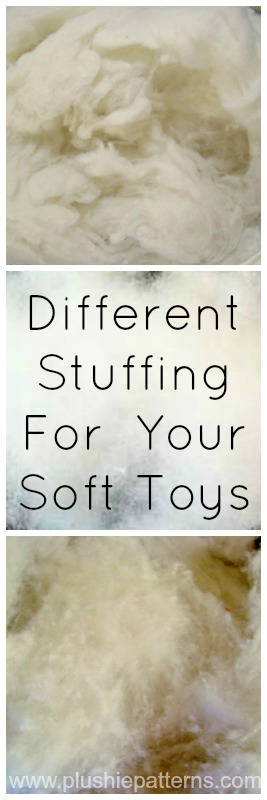
Tips on using stuffing:
- Use little pieces at a time. I know this is hard, we want that project done now! But, big pieces leave lumps—and that is not good. Small pieces at a time.
- Use a dowell or NON-SHARP item to push the stuffing into smaller spaces. Points love to jump through the fabric and leave a hole! I hate that! A pencil eraser end works good.
- When closing the doll, animal or pillow stuff just a bit more right before the last few stitches. There always seems to be a little less in this area because you are pushing it all inside and don’t want it to fall out when sewing.
When starting with this whole soft toys and doll business I never really thought about stuffing and the different kinds and how It kind of affects what you are making. I of course started with the typical filling is the poly-fil that you get in the bag at the craft store. This is usually 100% polyester. Leave a bunch of air around it and it will be fluffy. Nice feel to it, but it really sheds all over the place. This will give you the most itchies in your nose that’s for sure.
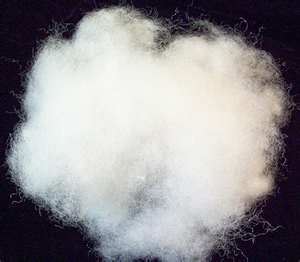
Because it is pulled apart and fluffed for you it is the best choice for stuffing soft items and not the real dense ones, or you would really have to pack it in. Lately I have found that even within the poly-fil world there are a few different brands out there and some of them are different from others. For the last little bit I have been using a poly-fil from Morning Glory. It has a much different feel to it than the typical style of poly-fil.
The fill isn’t fluffed as much as the other kinds and won’t shed on you either.There are little balls or chunks in there –take a look:
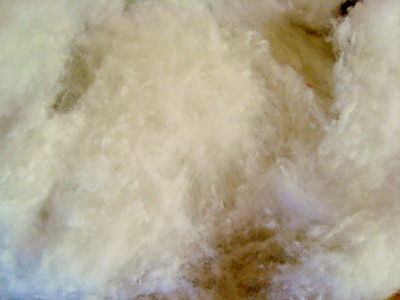
You can definitely pack this in. Tight. And there isn’t any fluff escaping from the seams, which is so nice!You have to pull it apart just a bit, but it is really nice to work with. Besides the Polyester fill there is wool. I love my wool stuffing. I got this big bag from a garage sale. I kind of hoard it and haven’t used too much— but right off you can tell a big difference in the look. Again, it isn’t fluffed or separated very much.You have to pull it apart and give it a bit of fluff yourself. It has a bit of a greasy feel too. Not anything that will leave your fabric oily, but it is noticeable when you are stuffing your cute little animals, dolls or pillows.
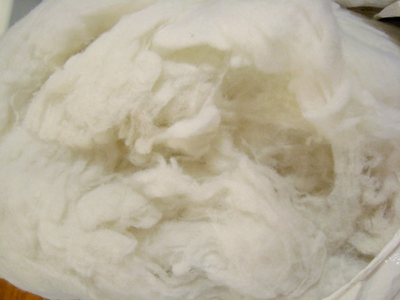
So, what happens when you need some stuffing and there is none to be found? Grab those batting scraps. It is a good backup for stuffing if you are “up a creek” and need something—quick. You will have to pull it apart a bit before you can use it though, or it will be SUPER LUMPY and difficult to use. Because it is flat and squished it does work nicely for dense projects. This isn’t one to use if you are needing a fluffy, soft feel. I would use it on smaller projects and not big ones too—this might end up lumpy! Be aware.
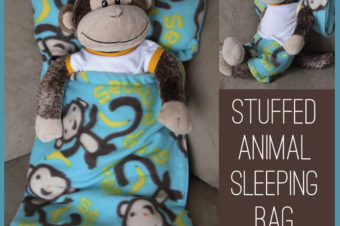
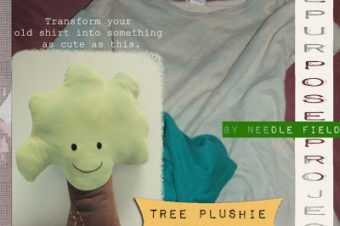

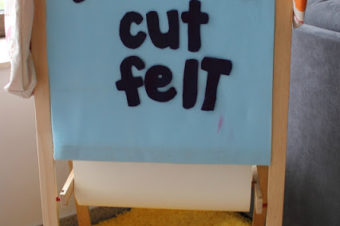
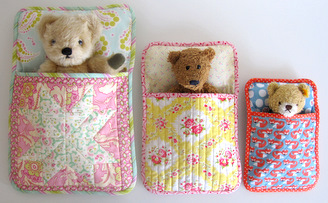
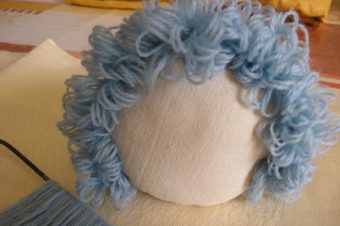
4 Responses
lauren
I save fabric scraps to glue on notebooks and random objects, and the ones that are too small for that I use for stuffing.
Certain kinds of silk can easily be pulled apart, and makes for a soft stuffing. I get silk second hand from clothing, so I don’t get much stuffing scraps out of it, but it’s enough for really small projects.
Some really stiff fabrics, like the kind with lots of printing, don’t do well. They don’t bend and result in ugly lumps.
Certain slinky fabrics, the kind that crumple really easily, make good stuffing since it crumples up nicely and doesn’t compact hard.
For the most part though, cotton, poly, blends, everything else, works ok. It winds up being really heavy and dense, so I tend to just use it for the feet of dolls, or things that will be standing upright, like a flat bottomed toy or a bottom piece in a two part plushie as a supportive base. Works pretty good in pillows that are for looks, like small pillows to display some of the bigger rocks I have (saves the surface of whatever I set the rock on from being scratched), and decorative pillows.
I stuff all my scraps in a bag, and when I need some, I shred it by hand (if it’s silk or something with easily pulled apart fibers) or chop it up with scissors. I tend to keep it in emergencies, but sometimes it’s my go to stuffing.
Natalie
I buy old unloved stuffed toys from second hand stores, I slit them open and pull out the stuffing, I then put it in a zippered cotton pillow case and hand or gentle machine wash it, a dash of fabric softener in the final rinse and then dried in the sun. I pull it apart and fluff it up again before use. I also reuse the doll beads that some have in them.
Allison Dey Malacaria
I’d love to offer up some more reading about toy filling. I did a lot of research and my own stuffing and washing tests with several kinds of stuffing. My motivation was the fact that polyester fiberfill is listed in the US Toxic Substances Control Act as a toxic material. Here’s the link to the page that will take you to articles regarding the toxicity of polyfill and the new and traditional fillings and their performance tests. http://sweaterdoll.blogspot.com.au/p/natural-fiberfill-tests.html Enjoy!
Becky
thank you for sharing your article.